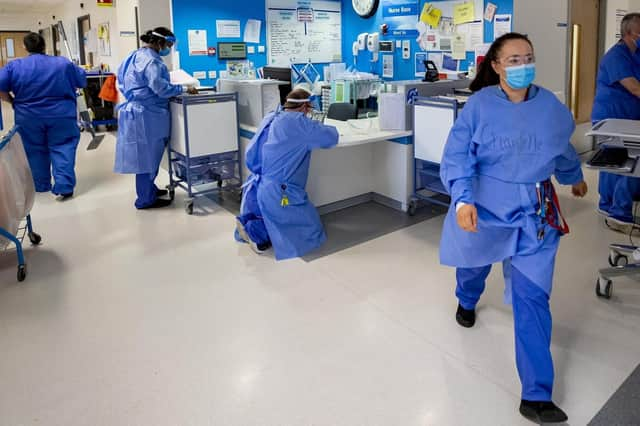In Scotland's NHS, everything is just a different shade of bad right now - Dr Iain Kennedy


I’m not saying this to scaremonger, or to sound like a broken record – I’m saying it because I feel it needs to be said over and over until the severity of the situation is finally, properly acknowledged.
Recent BMA Scotland doctor vacancy heatmaps contextualise the longstanding and increasing medical workforce crisis facing the NHS in Scotland. Everything is simply just a different shade of bad right now – what they indicate, crucially, is that no area in Scotland is not facing a medical staffing crisis.
Advertisement
Hide AdAdvertisement
Hide AdIt is simply unthinkable, and yet here we are. Six years ago the Scottish government acknowledged the GP workforce needed to increase by 800 across the country by 2027 – numbers are dwindling and now we need at least 1000 more. As it stands GP practices are providing more than 700,000 appointments a week for the people of Scotland – yet they are doing it with considerable gaps across the workforce. I see colleagues who have put blood, sweat and tears into their jobs who are demoralised and overworked.


Consultant colleagues across secondary care face the same problems. The only certainty that comes with each working day is that there isn’t enough time to get all the work done. An FOI of Scotland’s health boards at the end of last year suggests there are 937 vacant consultant posts – that is enough people to staff an entire hospital.
And the stark difference for both primary and secondary care between rural and urban areas is not new – but it is clear that we need a plan to urgently address these issues and the impact of rurality, while also acknowledging the problems being faced in the central belt boards.
When it comes to doctors – and, frankly, the rest of our health care colleagues – there simply isn’t enough of them, and they need urgent support. Not only do they need support, they also need understanding. They truly are doing everything they can to support their patients in the best possible way – but the workforce is running on empty. There is simply nothing left for many of them to give.
I am deeply worried for my colleagues and our patients. Today, junior doctors in Scotland will reveal whether or not they will accept a pay offer made to them by the Scottish government – whatever way they decide, their strong mandate for strike action remains in place for several more months, and ultimately, they have reached this point as a result of years of failing to properly plan to recruit and retain the medical workforce we need for this country. Recruitment and retention must go hand-in-hand – recruiting 10 new doctors will not make a difference if you lose 11 in the process.
I hope this is a starting point for the government to finally start seriously considering this particular aspect of medical workforce planning, and how we need to be flexible and adaptable from area to area and across primary and secondary care and move forward with a national conversation on the future of the NHS. If they do not, there is no prospect of the picture these heatmaps represent improving at all.
Comments
Want to join the conversation? Please or to comment on this article.